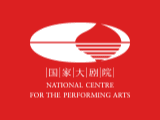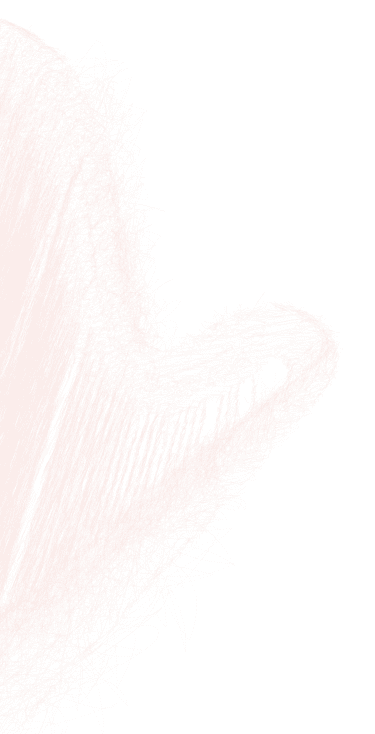


The musical tradition of the Chinese civilization can go back thousands of years. "Music Book" in Records of the Historian says, "There is a need to collect ballads from different places, harmonize the music styles, and make up for the weakness, so as to assist in governance and education." The traditional music was used as a tool of edification given its aesthetic feature. Propriety, music, benevolence and righteousness became the defining characteristics of the ancient civilization which had Confucianism at its core. Due to the significant role of music in the establishment and inculcation of social morality, the music temperament and the instruments improved and diversified over time. Yuefu, Qingshang, Hu, and banquet music in Sui and Tang Dynasties emerged one after another, showing a diverse range of influences. Although they were not as grand as those in the heyday of Liyue (ritual music) and Yayue (elegant music), they have become an important part of our traditional treasure in terms of melody, musical instrument, musical notation and music education. From the Song Dynasty to the Ming and Qing dynasties, with an ever-weakened political attribute, music flourished among the people. Folk songs and tunes, Southern Opera, Yuan Opera, musical storytelling, ethnic songs and dances, Kunqu Opera and Peking Opera made progress amid changes. They inherited profound music traditions and in the meantime left a valuable legacy for later generations. In early modern times, western influence began to be felt in the music scene which was no longer dominated by traditional Chinese music. The growing influence of Western music left a remarkable imprint on the Chinese music scene. Tradition is a river, and civilization moves forward in the constant interactions between the old and the new, the past and the present.
Using sounds as the medium, music has gradually grown from a mere auditory experience to a collective cultural symbol of a particular era. The synchronic differences and diachronic changes of humanity have been found in the music, which has become a symbol of the times. Meanwhile, composers, performers and the audience, from their own perspectives, express their feelings and identify with each other. An individual's thoughts and emotions endow music with cultural connotations, which reflect the cultural attributes and features of a particular era. In the "Sounds of China" series this season, we will explore from multiple perspectives the legacy of different periods and their convergence in China's music scene.
The concertos featuring various Chinese traditional instruments and orchestra will unveil an exciting dialogue between the past and the present, between the Chinese classics and the Western symphony. The zheng concerto The King Lanling written by Fang Dongqing was inspired by the long-lost musical dance of the Northern Qi Dynasty Lanling Enters the Array. The pipa concerto King Chu Doffs his Armour was composed by Zhou Long based on the ancient music piece of the same title which was first seen in the Collection of Pipa Works by Hua Qiuping in Qing Dynasty. Set off by the symphony, the music, which is based on a centuries-old idea, gives a new appeal now. ZHAO Jiping, inspired by the ethnic music that was thriving along the Silk Road in the prosperous Tang Dynasty, composed the guanzi (double-reed pipe) concerto The Silk Road Fantasia, which depicts a contemporary composer's reverie on the ancient Silk Road and introduces the audience to the life of ethnic minorities many centuries ago. The suona concertoAll Birds Worship the Phoenix by GUAN Xia depict harmony between human and nature in folk culture. HAO Weiya's dizi concerto Flowers Blooming on the Paths in the Fields, commissioned by dizi soloist DAI Ya, explores innovation and development of traditional melodies and rhythm. Conductors LI Biao, ZHANG Guoyong and ZHANG Yi will collaborate with soloist JIANG Yang (pipa), CHENG Haoru (guzheng), HAN Lei (guanzi) and DAI Ya (dizi) as well as the orchestra to present five well-acclaimed concertos, showing how tradition music forge ahead innovatively in the contemporary music landscape.
In concerts that bring together traditional Chinese instruments and chamber music, we can experience a compelling encounter between different timbres and rhythms and feel the harmony in diversity. Due to its power of cultural expression and symbolic significance, music can transcend the barriers between languages and between civilizations. This allows for the cooperation between music from different parts of the world. The combination of Chinese and western music not only enriches the cultural messages delivered by music but also gives welcomed flexibility to chamber music. The melodic expression of traditional Chinese music and the structural pattern of western music complement each other to explore more possibilities. LU Yiwen, an emerging erhu soloist, ZHANG Weiliang, who is adept at dizi, xiao and xun, and WU Man, a pipa soloist living in the United States, will work with the NCPAO's Bridge Quartet, the Fusion Quartet and the NCPA Quartet to show the audience a fabulous blend of oriental and western music.
We will continue to bring more symphonic works by excellent composers who grew up in the era of reform and opening up, and continue to promote new compositions and their presentation. The Lingnan Suite composed by YE Xiaogang shows the beauty of the landscape in south China's Lingnan region and the friendly people there, and his Symphony No. 7 "Heroes" eulogizes the heroes who exemplify the "Chinese spirit". Qigang Chen's Reflet d'un temps disparu for cello and the orchestra, inspired by the melodic mood of Three Stanzas of Plum Blossoms, expresses a sense of nostalgia, and his Jiang Tcheng Tse for the soprano (in traditional Chinese singing style), mixed chorus and orchestra expresses a compelling emotional power, lamenting the death that keeps lovers forever apart. GUO Wenjing's Riyue Mountain, a Passacaglia for Orchestra combines polyphonic music and folk music. Julian Yu depicts life in rural China in his symphony suite Village Opera. The Symphonic Fairy Tale of Dunhuang The Deer of Nine Colors, Tan Dun's commission for the NCPA, uses the traditional Chinese musical language to tell a story about compassion that was originally recorded in the Dunhuang murals. And, his contrabass concerto based on the novel Wolf Totem highlights the conflict and coexistence between humanity and nature from the perspective of animals. These symphonic works reflect the cultural identity and the zeitgeist. Zhao Jiping's new composition, a symphonic tale based on the dance drama The Story of Hua'er, will have its world premiere this year. It centers around the idea of Hua'er, folk love songs in the northwestern district of China , to eulogize metaphorically the spirit of perseverance, fearlessness and generosity. Inspired by the philosophy and artistic conceptions typical of Chinese culture, YAO Chen and HUANG Ruo wrote two works From the Vessel of Ancient Soulsand Butterfly Exchange upon commission of the NCPA. HAO Weiya's Chinese-style Waltz composed for the "Festival Waltz" concert will also premiere this season. While carrying forward the cultural tradition, artists find new voices in their symphonic works and explore the resonance between music and the spirit of this era.
Emphasizing the ideas of inheritance, accumulation, inclusiveness and innovation, the concert series "Sounds of China" captures the achievements in China's music scene and presents the artistic expression of the zeitgeist. LI Zehou wrote in The Path of Beauty that "It is what makes us human to have rationality in sensibility, have social nature in individuality, and have imagination and understanding in perception and emotion. In other words, humanity is about sensibility which has rationality in it, emotion and perception which have imagination and understanding, a form which has content". The beauty of art lies in its multiple expressions that conform to human nature, which urges us to constantly draw strength from the past, and move towards the future.
LIU Xun
Senior Manager of Artistic Planning & Communications,
China NCPA Orchestra

 SERIES CONCERTS
SERIES CONCERTS
LIU Tieshan, MAO Yuan Dance of the Yao People
GUO Wenjing Mount Riyue, a Passacaglia for Orchestra
FANG Dongqing The King Lanling
YE Xiaogang Symphony No. 7 "Heroes", Op. 85
YAO Chen From the Vessel of Ancient Souls, for Orchestra *World Premiere
HAO Weiya New Work *World Premiere
Qigang Chen Reflet d'un temps disparu
Qigang Chen Jiang Tcheng Tse
LIU Tianhua Bird Calls Echo in the Hills
Folk Song / Arr. ZHANG Yi Jasmine Flower
CHEN Gang / Arr. LIANG Nan The Sunshine on Tashkurgan
CHEN Yi Fiddle Suite
HUA Yanjun The Moon Reflected in Er-Quan
MA Sicong / Arr. JIANG Yiwen A Tune of Homesickness
CHOU Wen-Chung Soliloquy of a Bhiksuni
JIA Ru Encounter Suite *World Premiere
Traditional Work / Arr. ZHANG Weiliang Hujia (Eighteen Songs of a Nomad Flute)
GAO Weijie Burning Qin
Traditional Work / Arr. ZHANG Weiliang Parting at Yangguan
HUA Yanjun / Arr. ZHANG Weiliang The Moon Reflected in Er-Quan
LIANG Lei Concerto for Silk and Bamboo *World Premiere
HUANG Ruo Butterfly Exchange *World Premiere
GUAN Xia All Birds Worship the Phoenix
HAO Weiya Flowers Blooming on the Paths in the Fields
Julian Yu Symphonic Suite Village Opera
WANG Leyou Liebetango, for Violin and Piano
A Bu For Casper, for Clarinet, Violin and Piano
A Bu Confessions, for Cello and Piano, Op. 2
A Bu Three Jazz Pieces, for Trumpet, Horn, Trombone and Piano
CUI Jian / Arr. A Bu Greenhouse Girl
TAN Dun The Deer of Nine Colours, Symphonic Fairy Tale of Dunhuang
TAN Dun Contrabass Concerto Wolf Totem
TAN Dun "Ya" (from String Quartet No. 1 "Feng–Ya–Song")
ZHAO Jiping Sacred Cloud Music
WU Man / Transcribed by Danny Clay Four Chinese Paintings Suite
HE Zhanhao, CHEN Gang / Arr. JIANG Yiwen The Butterfly Lovers
TAN Dun Concerto for Pipa and String Quartet